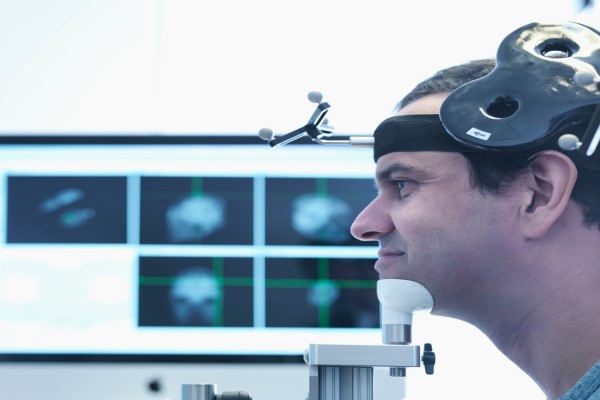How to Prepare for Your TMS Therapy Session

Transcranial magnetic stimulation, or TMS, has been studied extensively and proven effective as a treatment for depression. It may be recommended as an alternative to medications or a complementary therapy option. Most people who have been scheduled for a therapy session will probably have questions, including how to prepare. Making adequate preparations can make the session more convenient.
Learn more about the TMS procedure
An excellent way to prepare is to get as much information as possible. TMS therapy works through painless stimulation of the brain. TMS providers use magnetic coils placed outside the head to transmit pulses into the brain. A single session takes about 30 minutes. Patients typically undergo five weekly sessions continuously for four to six weeks.
The process is mostly painless, but slight discomfort may occur in some patients if the magnetic pulses get increased too soon. Patients must remember that they can ask the technician to stop or lower the pulses at any point during the session. No sedation or anesthesia is required, so patients will be fully conscious during the session. TMS therapy should not be confused with electroconvulsive therapy (ECT). Although the techniques are somewhat similar, the experience is different for patients. ECT is known to cause severe discomfort.
Talk to trusted friends and family
Patients can benefit from a strong support system while undergoing TMS therapy. They may not be aware of TMS's meaning, which translates to a need for an explanation. It is essential to know that it is different from ECT and beneficial for depression treatment.
If possible, patients can have someone drive them to the office. Sometimes, patients experience slight headaches after the first few sessions. In such cases, they might not be up to driving themselves home afterward. The headaches usually stop after a few sessions as the body gets used to the process. Also, moral support might help if the patient is feeling anxious. Patients can ask their companion to be in the treatment room with them or have them stay in the waiting room.
Bring necessary items on treatment day
When coming in for their TMS therapy session, patients should bring items that will make them feel more comfortable. These can include comfort items and headphones for music or podcasts during treatment. One might also consider packing a bottle of water and headache medicine, just in case. However, be sure to note every medication and dosage in case that the treatment team needs to know.
What to expect during treatment
The initial session may take about an hour and a half because the TMS-certified physician must find the most effective way to administer therapy. Patients will get protective earplugs to use while the system is in use.
Before administering TMS, the doctor will do a motor threshold assessment. The motor threshold is the magnetic field intensity that causes the right thumb to twitch. This test will determine the intensity of the magnetic field utilized during the therapy. This field strength may be adjusted to offer the optimum therapy dosage based on the patient's needs.
After the initial process, the doctor will position the magnetic coil on specific parts of the patient's head to receive the TMS treatment. This positioning ensures optimal results.
For about 19 to 37 minutes, the specialist will administer TMS. The gadget sends out quick "pulses" of magnetic fields every 10 seconds. The pulses create a tapping sensation on the head. This tapping may be uncomfortable for some patients, and the doctor can help alleviate this pain.
Patients can resume their usual daily activities, including driving, the next day. They may have a headache or pain at the stimulation location during or after therapy. This side effect is common and usually improves with subsequent therapy sessions. An over-the-counter painkiller can work if required to alleviate the pain. Temporarily reducing the intensity of the magnetic field pulses can make patients more comfortable during treatment.
After the treatment
After completing the TMS treatment, most individuals notice improvements in depression symptoms. However, keep in mind that the improvements may not be noticeable after the first TMS therapy session, and significant relief might take a few weeks.
If you suffer from depression and it seems that therapy and medication are not completely helpful, a physician may recommend TMS. It is normal to feel slightly nervous about your first TMS session. If you would like to learn more about the procedure, contact the office to book an appointment.
Get more information here: https://nycpsychiatricassociates.com or call NYC Psychiatric Associates at (917) 391-0076
Check out what others are saying about our services on Yelp: Read our Yelp reviews.
Related Posts
While there is no cure for many long-term behavioral disorders, they may be successfully controlled with the right combination of therapy and other treatments. Behavioral issues such as obsessive-compulsive disorder, attention deficit hyperactivity disorder, and addiction disorders are prevalent nowadays.While there has been a lot of study into what causes behavioral disorders, including diverse fields…
Depression treatment can vary from patient to patient. However, all psychiatrists approach each patient with some basic techniques. These strategies can guide you through your depression treatment. Here are the details on how each mental health provider can guide you through your condition.The psychiatrist can prescribe antidepressants. These drugs can help correct the uneven chemistry…
Professional schizophrenia treatment is necessary due to the complexity of the mental health disorder. Psychiatrists characterize it as a range of hallucinations, delusions, jumbled thinking patterns, and sometimes a loss of emotional resonance or expressiveness. These are just some of the symptoms that make trying to manage the disorder independently nearly impossible and dangerous.Before developing…
Treatment-resistant depression is a leading reason patients seek antidepressant alternatives, but it is far from the only reason. Though typically a first-line treatment, antidepressants are not the only option and are not right for every patient. The following are some reasons these drugs may not work for you and alternative therapies a psychiatrist might recommend.In…


